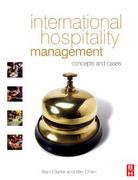Question
What did you learn from the Weather Company Case Analysis case analyses that you can apply to the Amazon company? What context differences are important
- What did you learn from the Weather Company Case Analysis case analyses that you can apply to the Amazon company?
- What context differences are important between the case example and Amazon? What assumptions do you need to make in order to use the concepts appropriately?
- Given Amazon, what concepts, tools, and readings from other resources are most relevant to helping guide how you might recommend improving Amazon? Why and how are they relevant?
Reference - Weather Company case analyses.
The Weather Company seeks to offer essential services while highlighting weather forecasts as a service or product using science as a necessary component while employing cross-platform communications methods to connect with consumers. This type of approach is a risky endeavor since it is not tailored to a historical precedent, but it has been created to encourage meeting strategic business objectives. However, this approach should be cautiously followed and should be accompanied by strategic incorporation of milestones, success tracking, and the implementation of communication (Collis & Rukstad, 2008). For instance, to ensure the success and viability of this approach, the focus should be on its overall mission, objectives, and strategy.
The strategy discussed previously is in line with the vision, mission, and values of the Weather Company. For example, the CEO, David Kenny, effortlessly labored to align business operations around the company's vision and placed ideas as the main driver for driving growth, success, and monetary benefits. This type of approach is only reachable with the help and buy-in of employees and robust communication channels. A multifaceted strategy is demanding and challenging to execute when the goal is to let it develop organically (Collis & Rukstad, 2008).
The goal is to develop a clear strategy that everyone can understand and adopt. Therefore, a clear-cut plan can be a starting point to help assess and resolve challenging situations and business decisions without contending with unnecessary impediments.
Essential elements following a clear-defined vision guarantee that the strategy is achievable while positioning the company with its purpose. A company needs to make informed business decisions to succussed and prosper. Furthermore, the company's leadership may be forced to make crucial decisions without well-researched information. The Weather company has a chance to expand its business by ensuring that the company leadership needs help change the thinking and culture of the company to align with its strategy (Hamel, & Prahalad, 2005). For instance, the alignments need to occur internally to ensure that the changes result in position results and outcomes. This approach is achievable if the design and goals are strategically aligned.
Furthermore, this method is attainable when the company enjoys a healthy culture, high-performance teams, funding, and measurable metrics. Nevertheless, the defined three-year strategy has only been funded for one year. The strategy metrics should include qualitative and quantitively analytical and measurement assessments to support the company's strategic vision. The strategic methodology maintains and relates to current and future goals (Collis & Rukstad, 2008).
The suggested method is aligned with the present and future requirements of the Weather Company and its stakeholders. For instance, the proposed method is designed to realign the company to its core values while strategically increasing its reach to more consumers. The strategic vision is to be a 24/7 broadcasting and story company operating on a cross-platform methodology and grow into the industry leader (Kanter, 2014). Lastly, developing and establishing a company that operates on a strategy gripped on the mission and values supports long-term growth and success.
This strategy plan enables and ensures a competitive advantage. Notably, competitors are not a prevalent force in the weather business. The Weather Company has a chance and opportunity to separate itself from rivals who may be risk-averse or fear change. Providing funding to pay for the three-year plan will provide the resources for the strategy to implement. These types of changes could lead to shifting the weather industry (Collis & Rukstad, 2008). For instance, the strategy discussed above is a "blue ocean strategy" since its employee's divergent methods to change the industry methods, norms, values, goals, and vision. The strategy will benefit the company because it will fear its competitors who fear change and are risk-averse. In totality, the company decides whether to grow and maintain value while maintaining its current competitive edge. The Weather Company managed to discover a way to maintain its industry standing while concentrating on its values and mission (Courtney, Lovallo, & Clarke, 2013).
Step by Step Solution
There are 3 Steps involved in it
Step: 1

Get Instant Access to Expert-Tailored Solutions
See step-by-step solutions with expert insights and AI powered tools for academic success
Step: 2

Step: 3

Ace Your Homework with AI
Get the answers you need in no time with our AI-driven, step-by-step assistance
Get Started


